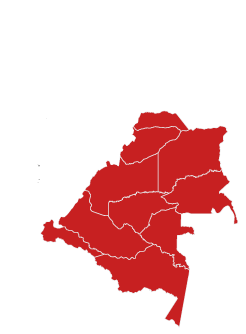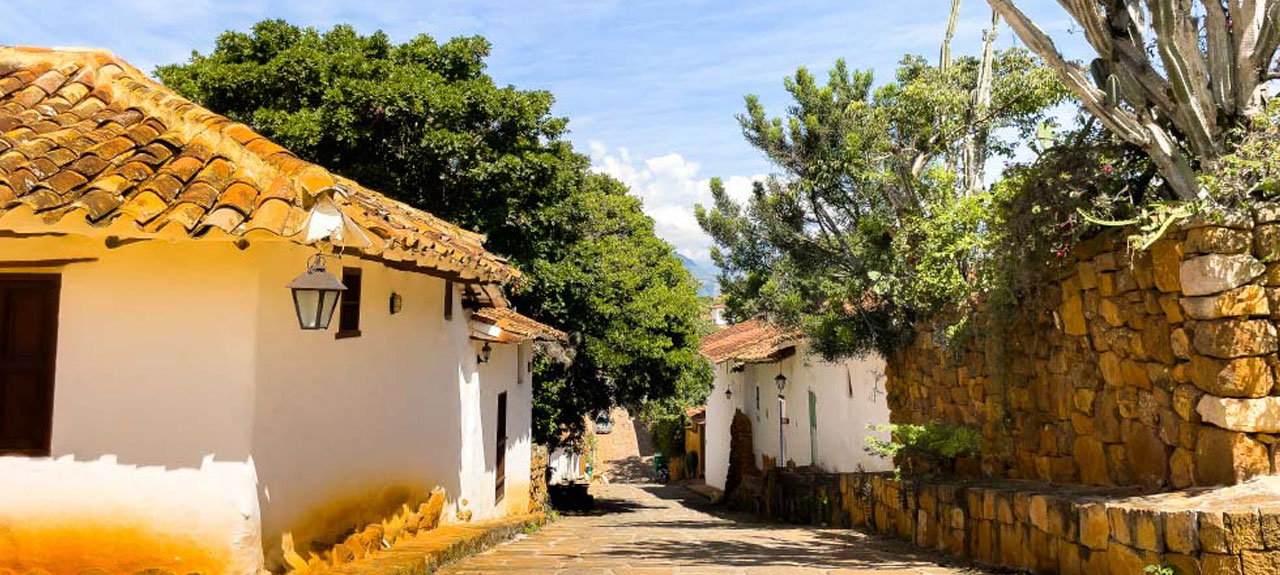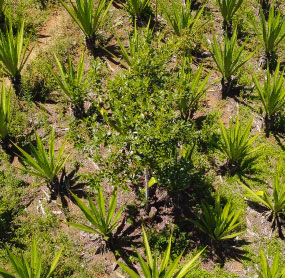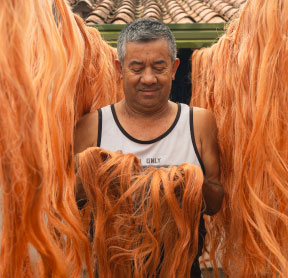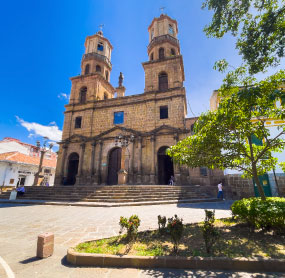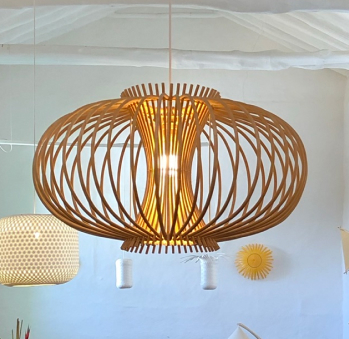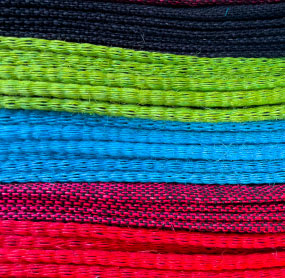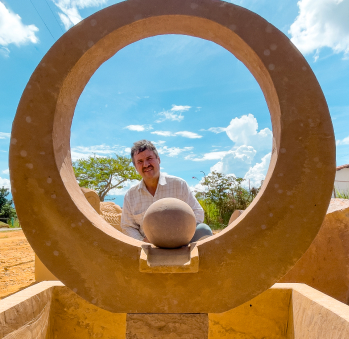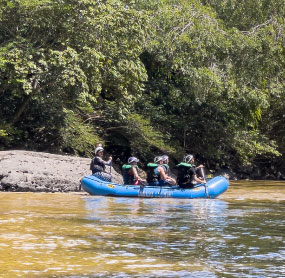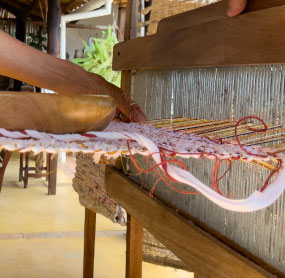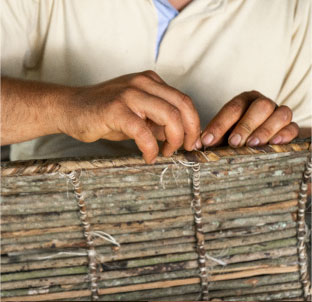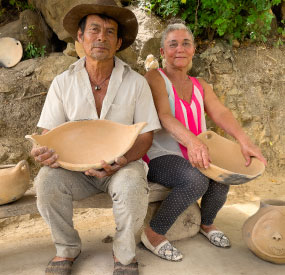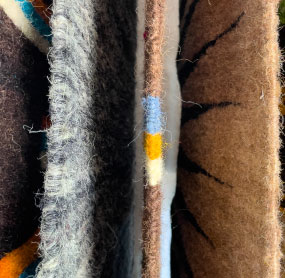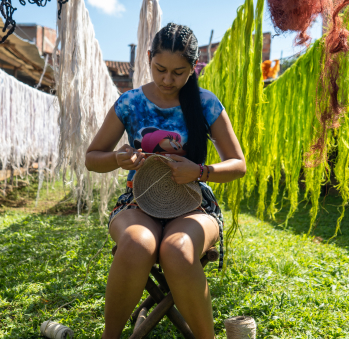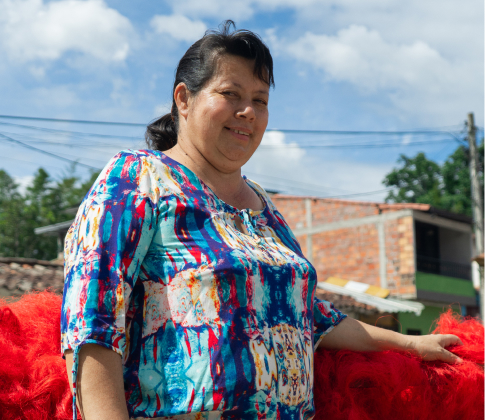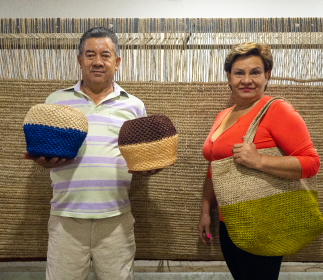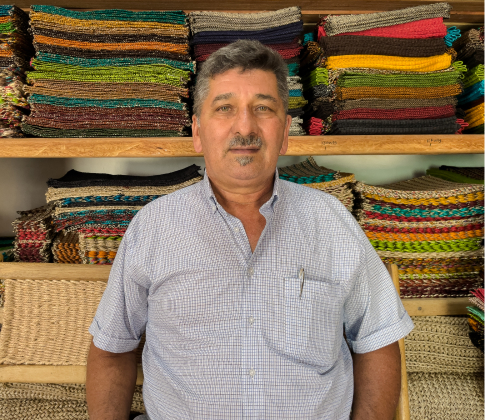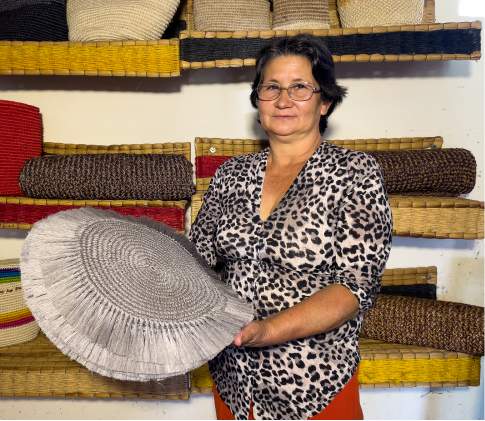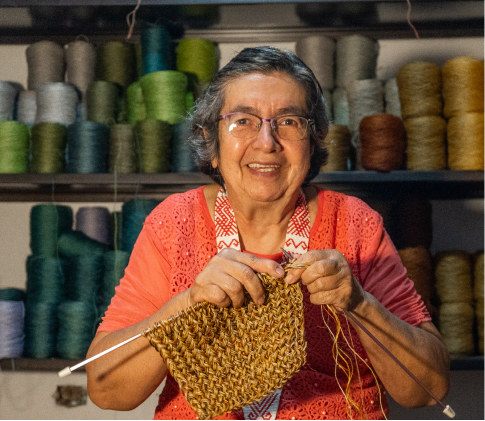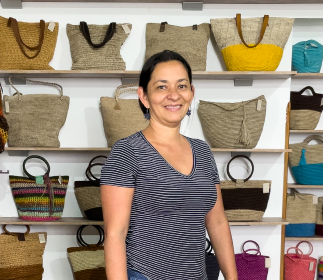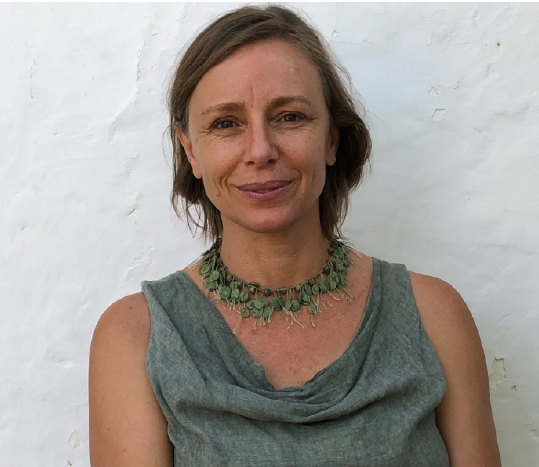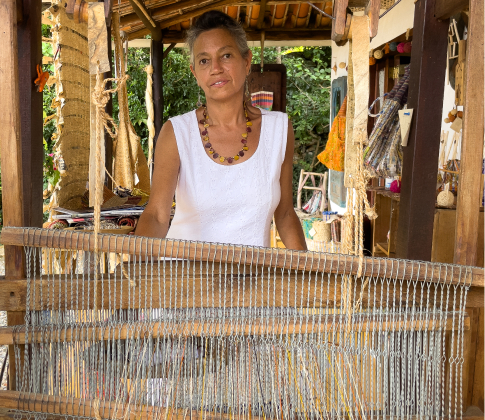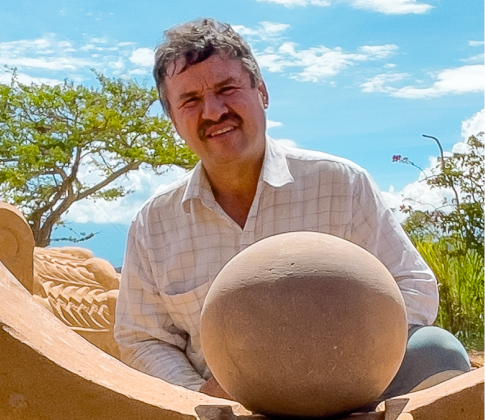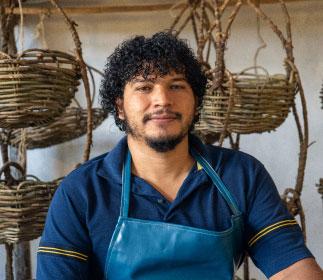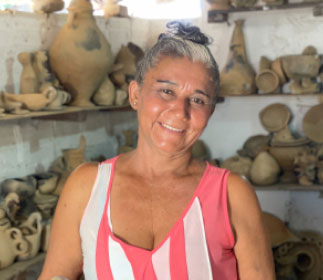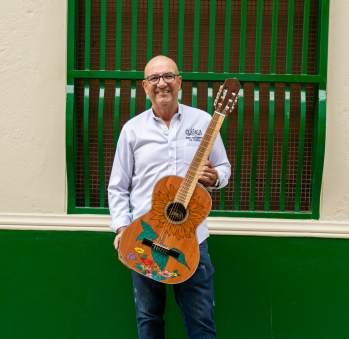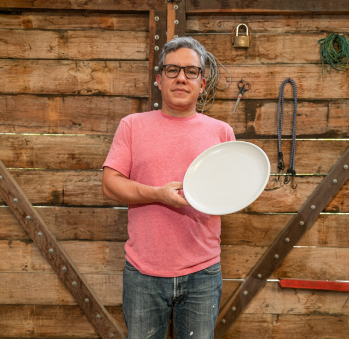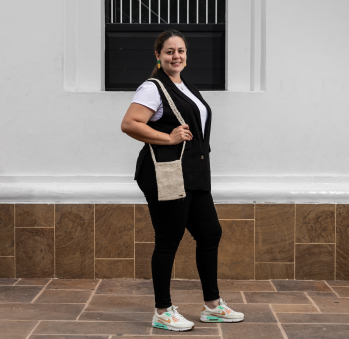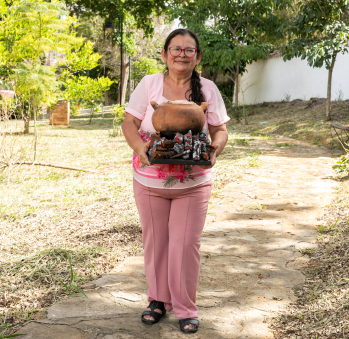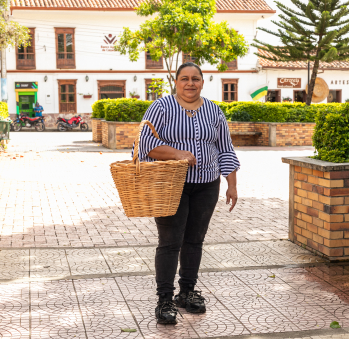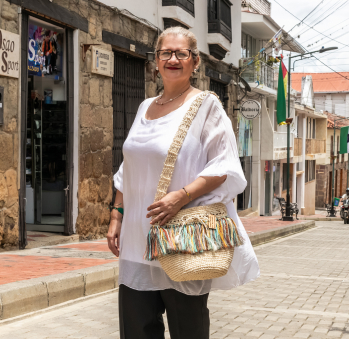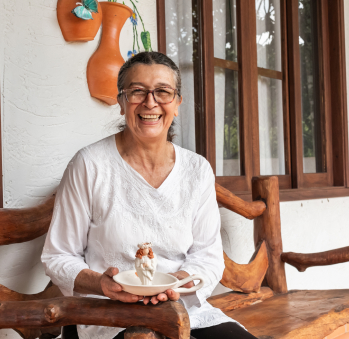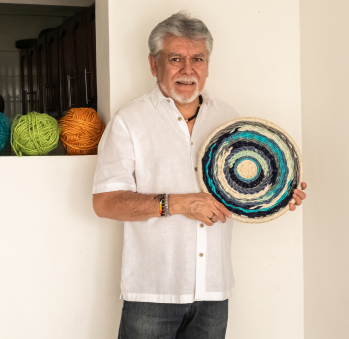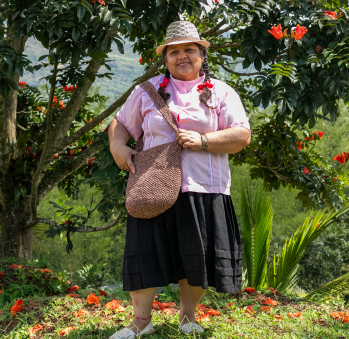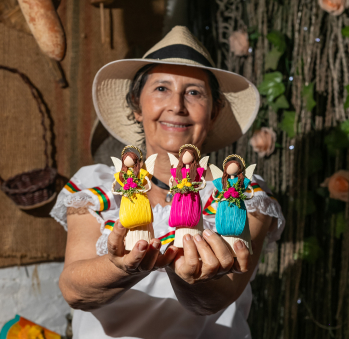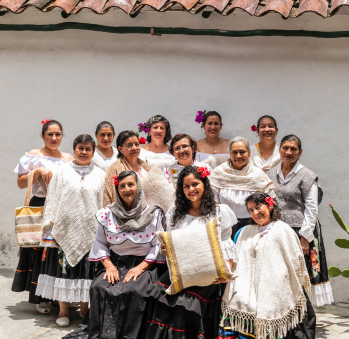Santander Route
Stepping into Santander is walking through its history, feeling the heat of its weather, and perceiving fique’s rough texture in its stories. Fique is a strong fiber with which the people of this region of coffee sack weavers were able to earn their livelihoods. It also endured the transition to synthetic materials in the late 1960s, which changed the course of its economy. Above all, visiting Santander is discovering the strong and unyielding character of its people. They overcome every obstacle that is put before them and are always ready to create new narratives for themselves. Santander’s artisans tell their stories with their hands. Traveling around the region’s crafting landscapes, we remember the Guane people, ancestral settlers of the Guanetá province who passed down their knowledge on weaving and pottery. This journey will immerse you in fibers and clays—and plenty of bodies of water!
Embark on a journey full of history
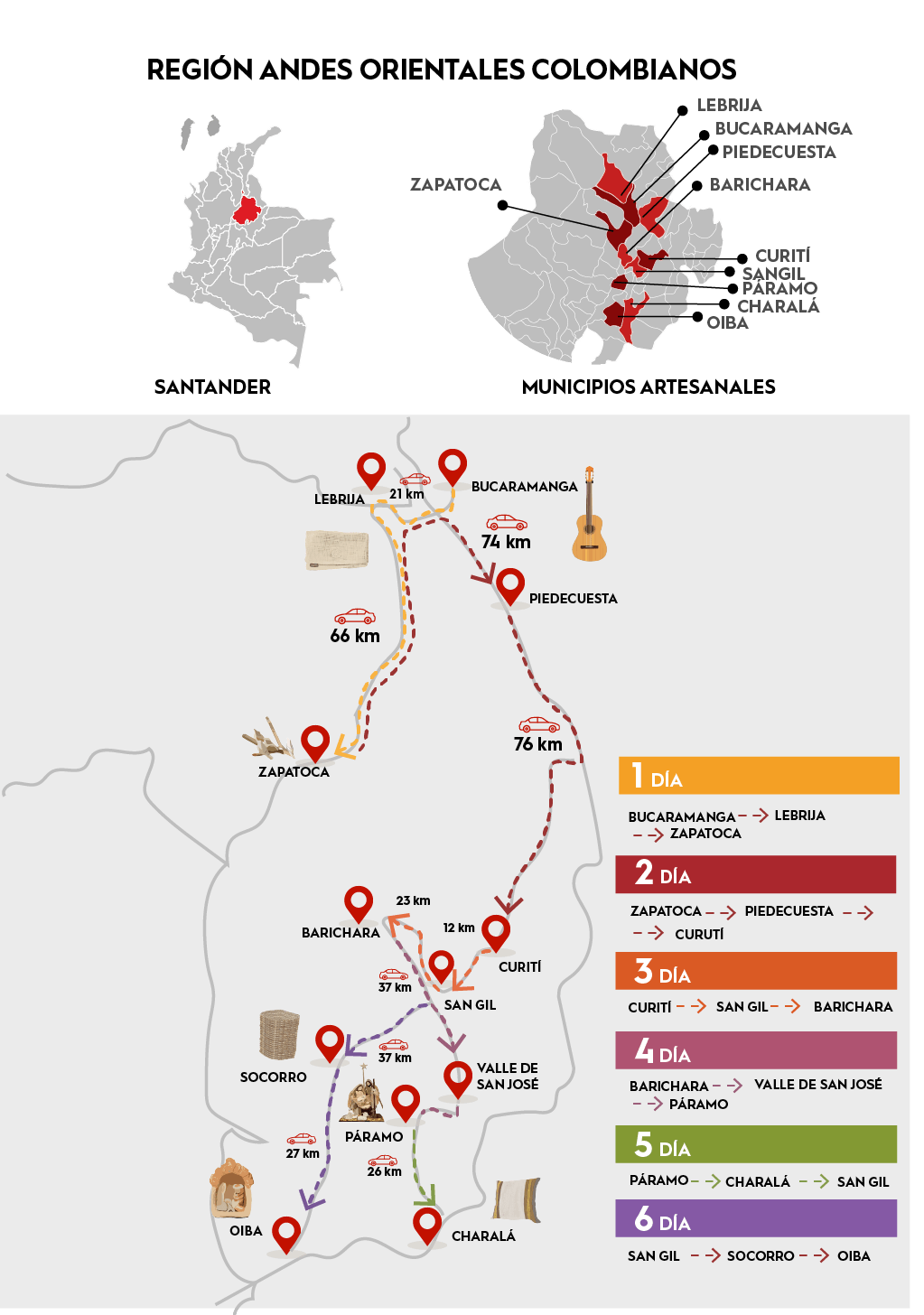
Artisans along the way
Artisans along the way
We recommended this tour
Schedule the visit in advance with the artisans.
Carry cash.
7 days
Car or Bus
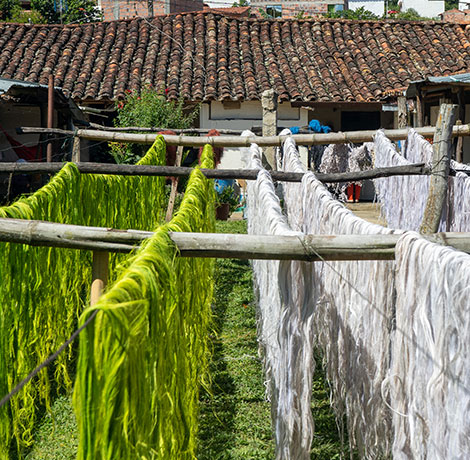
BUCARAMANGA—LEBRIJA—ZAPATOCA
We begin in the capital, the “beautiful city,” with its warm climate and friendly people. Take a stroll through the Central Market, where you’ll find a little bit of everything and can taste local delicacies. Visit the Casa de Bolívar, which will connect you not only to the history of independence but also to the legacy of the Guane people, who once inhabited these lands and whose traditions in pottery and weaving still thrive among the people of Santander. If you’re into adventure and nature, book a paragliding flight and visit the Eloy Valenzuela Botanical Garden. From here, you’ll be close to Girón, a traditional colonial town, and Floridablanca, home to the imposing Christ statue atop the Cerro del Santísimo. Get ready to meet the capital’s artisans on the second day of your journey.
Just half an hour away is Lebrija, Colombia’s pineapple capital, where you’ll meet artisans who extract the finest and silkiest fibers from the plant’s leaves. Lebrija is also home to numerous natural sites, with refreshing pools, waterfalls, and reservoirs where you can cool off from the intense heat.
An hour and a quarter further, you’ll reach Zapatoca, a town with a “silk-like” climate, featuring the Guane viewpoint and the Sierra Morena Vineyard, where corks were once made from pauche wood, a material you’ll encounter through local crafts. Here, artisans also weave stunning baskets and lamps from vine. Spend the night in Zapatoca.
ZAPATOCA — BUCARAMANGA — PIEDECUESTA — CURITÍ
After breakfast, head back to the capital, this time to explore its crafts. Start with guitar-making and then head to Piedecuesta, where you’ll immerse yourself in the unique clays of these mountains. After that, cross the imposing Chicamocha Canyon and travel the 75 kilometers to Curití, a charming town where the sight of fique fibers drying in the sun will stay with you. Each workshop you’ll visit features artisans mastering a different technique, and it’s truly fascinating to witness their skills. Dedicate this day and the next to exploring them all. You may complete your crafting experience with a tuk-tuk or mototaxi ride to Pescaderito, a stunning creek with crystal-clear pools for swimming and walking among its rocks. The temperature here is cooler, and it’s a magical place to get lost in its misty sunsets before heading back to rest. Don’t miss out on tasting the region’s traditional goat meat, as well as its delicious rice-stuffed empanadas.
CURITÍ—SAN GIL—BARICHARA
Just twenty minutes from Curití is San Gil, a destination brimming with nature, water, and adventure, and also home to a master artisan of fique, whom we’ll introduce you to. You can try rafting on the Fonce and Suárez Rivers, stroll among the ceiba trees, and admire the 1,800-plus gallinero trees in the El Gallineral Park. You can also swim in its natural pools — it’s a city full of greenery. Don’t miss visiting the market to try the local mute soup, famous Santander arepas, and traditional pepitoria.
Forty minutes from San Gil lies Barichara, known as the “paradise of rest”. Here, you’ll feel like time has stood still and understand why locals are called patiamarillos or yellow feet, referring to the striking orange hue of the land. Walking through the cobbled streets shaded by trees is part of the experience, along with tasting dried meat and breathing in the scent of tobacco wafting through the air. Be sure to visit the San Lorenzo Foundation in Barichara to marvel at their paper-making techniques, and the artisans living both in the town center and in the surrounding rural areas. You’ll have the chance to meet master weavers, carvers, and potters whose work will only strengthen your sense of this place’s unique identity. Spend the night here.
BARICHARA — SAN GIL — VALLE DE SAN JOSÉ — PÁRAMO
Head back towards San Gil, then take the road to Valle de San José, known for its own chorizo recipe and its natural pools. It’s also a great place to meet another artisan specializing in traditional Santander weaving, and to surprise yourself with crafts made from corn husks. Continue your journey to Páramo, our next destination, passing through the Alto de la Cruz, on the mountain that overlooks the valley, for a panoramic view. Once you arrive in Páramo, take a walk to visit the Ermita de la Salud, the Catholic Parish Church, and the Casa Cultural.
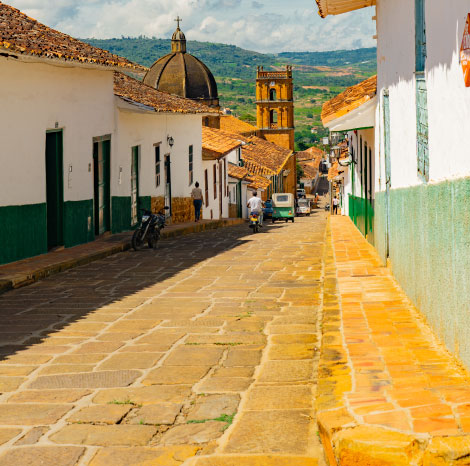
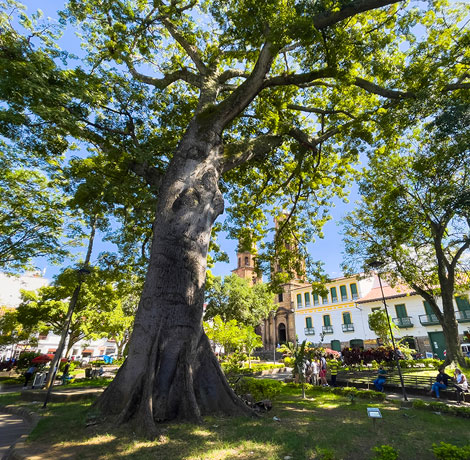
PÁRAMO—CHARALÁ—SAN GIL
Half an hour from Páramo lies Charalá, a land of cotton and textiles. The town’s people once wove canvas for sugar mills, a tradition you can learn about with the women of Corpolienzo, as well as at their Museum “del Algodón y del Lienzo de la Tierra”. Take a walk through the main park and appreciate the town’s centuries-old saman tree before returning to San Gil, just 50 minutes away.
SAN GIL — SOCORRO — OIBA
On the final day of your journey, visit Socorro, a heritage town full of historic buildings. Explore the Culture House, the Chapel of the Immaculate Conception, the Independence Park, and the Convent and Monastery—all transporting you to another time. Nearby, in a colonial house, you’ll find the workshop of a fique artisan we’d love to introduce you to. Socorro also offers stunning reservoirs, waterfalls, and hills, as well as its own stretch of the Suárez River.
End your enriching journey in Oiba, a land rich in white clays. Here, you’ll meet an expert potter and enjoy a stroll through this picturesque town, where everything crafted in clay mirrors the reality of the place.
We look forward to welcoming you back!
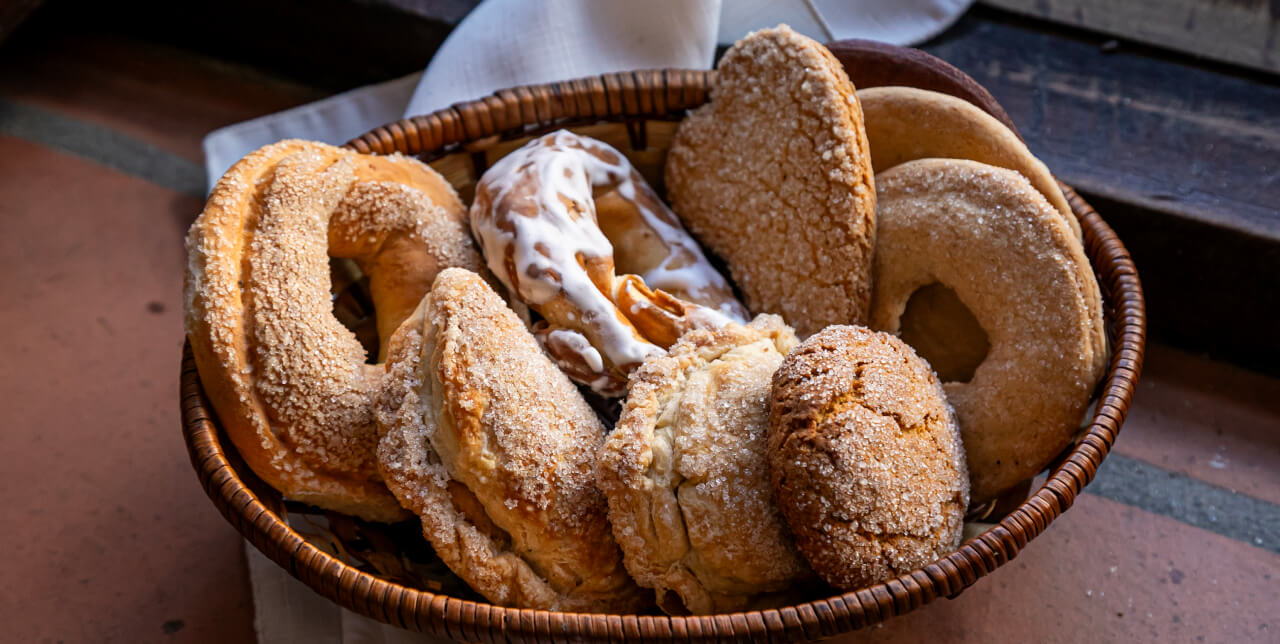
Traditional cuisine
and typical bites
Provoke yourself
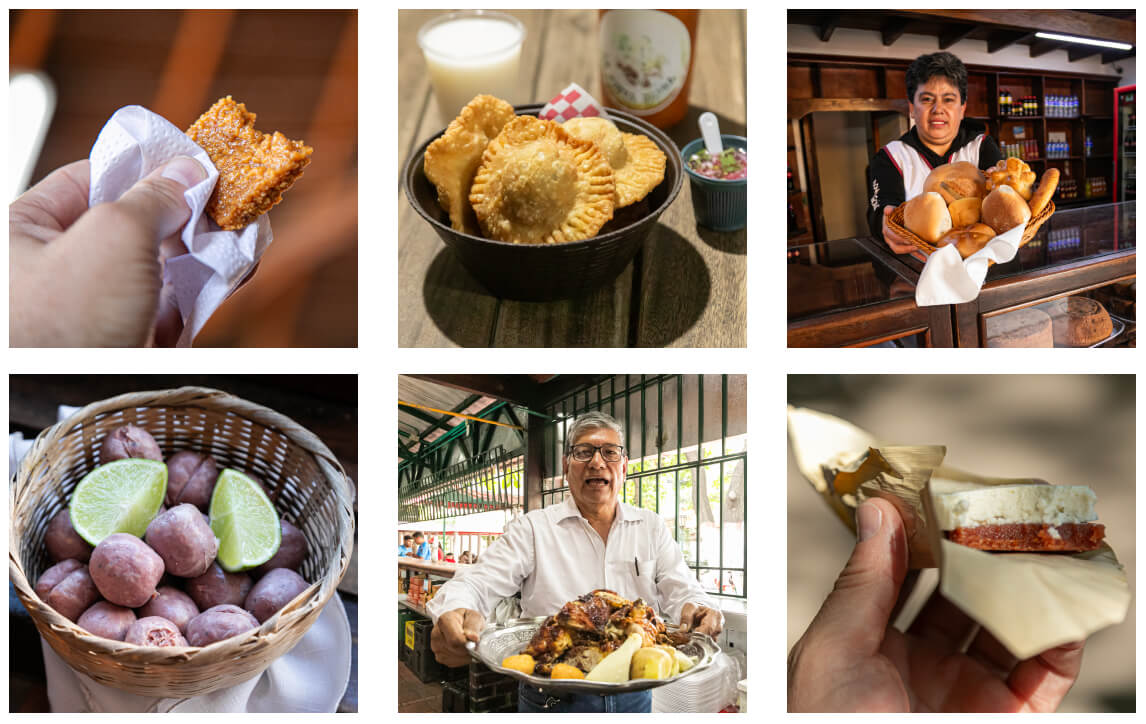
Don't leave without eating this 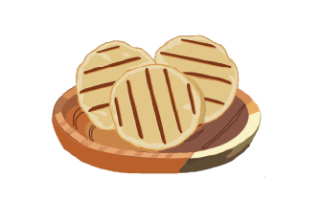
Goat is a staple in Santander’s cuisine and can be served fried, roasted in a wood-fired oven, or grilled over an open flame, typically accompanied by pepitoria, yuca, and Santander-style arepa.
The pepitoria is a flavorful dish made with the goat’s offal and blood, simmered with rice. The Santander-style arepa is made from maíz pelado (corn that has been cooked with ash to remove its husk) and ground together with pork cracklings, then seasoned with salt and shaped into round patties. These are cooked over an open flame until crisp and are served as an accompaniment with most meals. In Bucaramanga, you can try these dishes at Restaurante La Puerta del Sol, and they can be found in many establishments along the route.
Santanderian tamales are another local favorite. They are made with maíz pelado dough, flavored with the cooking juices of various meats, and filled with pork, beef, and chicken, as well as chickpeas. The tamales are wrapped in plantain or chisgua leaves and shaped into rectangular parcels. They are typically served hot and can be enjoyed at any time of day. For breakfast, they are often paired with hot chocolate and bread. You can find them at markets such as the one in El Socorro, and some are even made with rice.
In the El Socorro market, you’ll find a variety of traditional dishes, including:
Caldo: a broth made with milk, potatoes, eggs, and cilantro.
Sopa de pichón: made with coagulated beef blood.
Sopa de ruyas: a soup thickened with small balls of maíz pelado dough.
You’ll also find a wide selection of fresh fruits, which are combined to create delicious sweet fruit salads.
To lunch we go 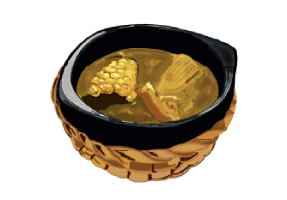
Carne oreada is the favorite dish of most people in Santander. A good cut of beef is salted, left to rest in the fridge overnight, then dried in the sun for several days. After that, it’s grilled and served with boiled yuca and hot sauce. The flavor is quite strong, and it’s served in almost every restaurant or piqueteadero (informal eatery). If it’s dried longer, it becomes carne seca (dried beef), which is also highly prized. In Bucaramanga, you can try it at La Puerta del Sol, El Viejo Chiflas, and El Desayunadero Tony. In Páramo, the artisan Ana Virginia Ruiz offers it at her restaurant El Puntal, where the dish consists of a piece of carne oreada, yuca, santanderean arepa, and guarapo (sugarcane drink), a meal once favored by farmers as a mid-morning snack.
Mute is the most popular stew in the region. It’s made with cow’s tripe (one of its stomachs), beef feet, pork meat, chickpeas, mute corn, peas, fava beans, squash, potatoes, carrots, onions, cilantro, cumin, and achiote for color. You can find it at traditional restaurants like La Puerta del Sol, El Viejo Chiflas, and El Desayunadero Tony in Bucaramanga, as well as at different branches of El Chiflas.
Chorotas sancocho is another regional specialty found in Zapatoca and at La Puerta del Sol in Bucaramanga. Chorotas are small balls made from maíz pelado dough (the same dough used for Santanderian arepas) filled with ground or shredded beef, chicken, or pork, along with onion and tomato hogao. The stew is made with beef and chicken ribs, along with yuca, green plantains, corn on the cob, arracacha, and squash, and the chorotas are added towards the end of the cooking process to avoid them falling apart. It’s truly a must-try!
Flavors to discover and snack on 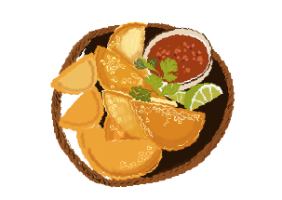
Hormigas culonas (large ants) are a popular snack in the land of the Guanes (the indigenous people who once inhabited this region before the arrival of the Spanish). These ants were eaten for their high protein and fat content. Their heads, legs, and wings are removed, and then they are toasted in clay pots with a little salt. They taste like peanuts and are believed to have aphrodisiac properties. These ants are harvested after Holy Week and can be found at local markets and street vendors.
Carisecas are sweet corn arepas made with yellow corn and panela. You can try these treats at any time of day, especially paired with hot chocolate, in towns like Oiba, El Socorro, and San Gil.
In the bakery Delipan in Zapatoca, a family-run business since 1970, you can find a variety of freshly baked breads made with the finest ingredients. Some of the specialties include mestiza bread, sweet bread, cascaritas, bizcochos, hojaldrados, and the favorite of many: pan salado (savory bread) with unique flavors and textures.
In the Valle de San José, Aurora Vera Salcedo is known for making the most famous chorizos in Santander. These sausages are made from pork, herbs, and spices, then cooked in sugarcane guarapo and served with boiled yuca and homemade hot sauce. You can find them at Chorizos Doña Eustaquia in the town’s main square, a family-run restaurant with a long-standing tradition.
In Charalá, a local sausage called génova charaleña is a popular delicacy. It’s a little spicy and similar to the butifarra from Soledad, Atlántico. It’s typically served cold with a squeeze of lime. You can find them as an appetizer when you visit the Lienzo de la Tierra workshop in Charalá, along with delicious corn empanadas filled with ground meat.
To sweeten the palate and unmissable drinks 
Santander is known for its love of sweets, and one of the region’s most famous treats is Bocadillo Veleño, which has a protected Denomination of Origin. This sweet is made from two types of ripe guava, white and pink, and wrapped in bijao leaves for preservation. It’s often served with white cheese.
Other traditional sweets include those made from local celery, arracacha, cidra, dulce de leche cortado, coquitos , pastillas de arequipe, and maicenitas, which you can try at Dulces Maizenitas 1950 in El Socorro. Maicenitas are a family recipe, made by the Garcías, with rice and have a delicate texture that makes them perfect as a gift for friends and family. You can also enjoy Floridablanca’s Obleas, wafer cookies filled with arequipe (caramel spread) and other delicious fillings. The Sweet Street is the epicenter of these treats.
In Lebrija, there are large pineapple plantations, and local artisans make a variety of pineapple products, including jams. The Asociación de Artesanos y Agricultores Hecho en Lebrija produces jams that pair perfectly with pork dishes, or can be spread on soda crackers or fast food. The association has also started producing pineapple liqueur.
Chicha de maíz is the most traditional drink in Santander, made from corn.
Masato is a lightly fermented drink made from corn or rice in a clay pot, flavored with cloves and cinnamon, and sweetened with sugar.
Refajo is a refreshing drink made by mixing beer with Kola Hipinto (a local soda produced in Santander). It’s the traditional drink to accompany meals. When made with equal parts of beer and Kola Hipinto and guarapo, it’s known as Carabina.
Guarapo is a fermented drink made by soaking in clay pots pineapple peels in freshly squeezed sugarcane juice. After fermenting for several days, it’s served chilled. A variation served with lime in a salt-rimmed glass can be found at Ana Virginia Ruiz’s restaurant El Puntal.
Recommended sites
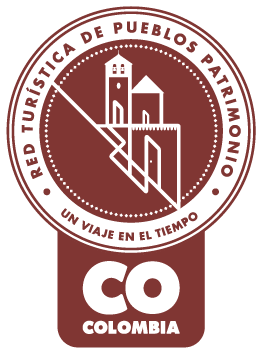
Pueblo Patrimonio
La Red Turística de Pueblos Patrimonio de Colombia es un programa especial del Ministerio de Comercio, Industria y Turismo, ejecutado por FONTUR, que trabaja con 17 municipios de Colombia que poseen declaratoria de Bien de Interés Cultural (BIC) a nivel nacional para su valoración y proyección mediante el turismo, generando así más oportunidades de desarrollo y sostenibilidad en las comunidades.

La Medalla a la Maestría Artesanal es un galardón que Artesanías de Colombia entrega anualmente, con el cual se hace un reconocimiento a aquellos artesanos, empresas y comunidades artesanales que, contando con una trayectoria destacada, sobresalen a nivel nacional por su excelencia en el oficio así como por preservar el quehacer artesanal.

Denominación de Origen
Es un signo distintivo que identifica productos reconocidos o famosos por tener una calidad o características específicas derivadas esencialmente del lugar de origen y la forma tradicional de extracción, elaboración y producción por parte de sus habitantes. La protección conferida sobre una Denominación de Origen implica que ninguna persona puede identificar con la denominación protegida productos iguales o similares a los amparados, cuando no provengan del verdadero lugar y no cumplan con las características o calidades que le han dado la reputación al producto reconocido. Las Denominaciones de Origen para productos artesanales colombianos que han sido protegidas por la Superintendencia de Industria y Comercio en nuestro país son actualmente 12.
No puede copiar contenido de esta página

